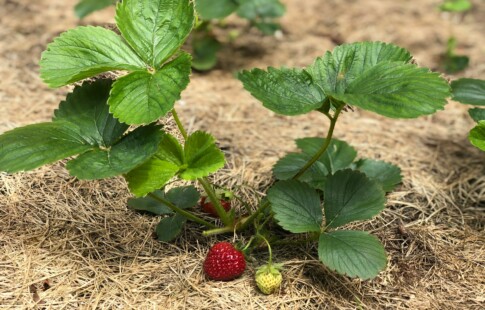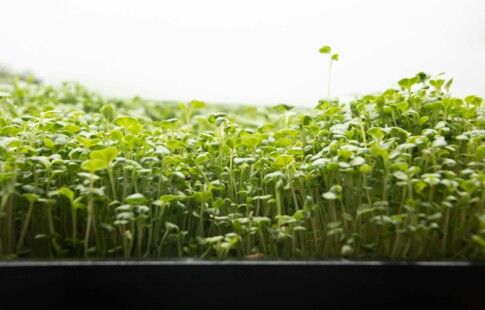
Top 5 Pros and Cons of Aquaponics
We are reader-supported. When you buy through links on our site, we may earn affiliate commission.
Aquaponics is a hydroponics system that utilizes aquaculture to grow plants. Aquaculture, also known as fish farming, allows farmers to breed and harvest both fresh and saltwater species with controlled conditions. In aquaponic systems, fish waste is converted into nutrients for vegetables using bacteria. The entire process is environmentally friendly, saves water and creates no waste. In this post we’ll discuss the top pros and cons of aquaponics so that you can determine if this type of farming may be right for you.
Pros of Aquaponics
There are several pros and cons of aquaponics. The environmental and economic benefits of these systems, such as water efficiency, are important factors for sustainable farming.
1. Resource Efficiency
A main benefit of aquaponics is how water-efficient the system can be to operate, using up to 10 times less water than traditional agriculture. The recirculation system minimizes water waste and allows for the reuse of other elements such as fish feed. This saves money, headache, and resources to prevent waste.
It also better utilizes land. Aquaponics allows crops that require soil to grow in these areas. Depending on the region, quality, nourished soil may be hard to come by on some properties. Therefore, aquaponics opens up a lot of room for expansion by being cognizant of space and resources. Additionally, it opens up urban spaces for agricultural expansion.
2. Climate Adaptive
While many new technologies are touted as sustainable but are not really climate-resilient. With a growing global population and increased food insecurity, climate-adaptive farming methods are more important than ever. Aquaponics is a truly climate-adaptive growing method, allowing producers to make adjustments to save energy. Since aquaponics is a closed system with controlled conditions, it is easy to utilize techniques that can adapt to climate change, such as variances in temperature.
3. Economically Viable
The economic incentivization of sustainable agriculture is key to its longevity as an adopted growing method, not just a fad. Aquaponics is not only productive, its profitable. Aquaponics is a rapidly growing industry and can be installed in small and large-scale facilities. While the initial cost of set-up can be a bit steep, it is a worthwhile investment for growers who can now sell two different crops with the same amount of inputs.
4. Chemical Free
Like other hydroponics systems, aquaponics does not require the use of pesticides. In fact, using any type of chemical can make the fish sick, which is why growers must be so careful when it comes to water quality! Not using chemicals not only keeps input costs low but has numerous environmental and human health benefits.
5. Environmental Benefits
The environmental benefits of aquaponics are the most attractive features of this growing system. Aquaponics requires very little water and very little power overall. Because it is a closed system, there is no waste and no water pollution. Crop production is also higher per square foot than traditional farming, which is crucial to growing more food for a larger population. They have an overall 45% less environmental impact compared to alternative growing systems.
Cons of Aquaponics
While there are many benefits to aquaponics, there are some cons as well. Aquaponics systems can be expensive to set-up, and the infrastructure requirements may prohibit some mid-size producers from investing in commercial systems.
1. Limited Crops
Aquaponics is suitable for multiple species of fish and several types of vegetables, but the overall selection is limited. While the system is suitable for fresh and saltwater species, including tilapia, carp and bass, the range of vegetables is limited to water-heavy crops like cucumbers and green leafy vegetables like lettuce.
2. Electricity Consumption
Aquaponics may not require a huge amount of energy, but the energy required is significant. While it may be possible to utilize renewable energy for an aquaponics system, it should be noted that dependence on electricity may be cost-prohibitive for some growers. It could hit 1,500 to 2,000 kWh per month depending on the size of the operation because of continuous running.
3. Learning Curve
If you are already in agriculture, you’ll have to learn an entirely new system. The ideas are not transferable, and adapting to the technology and viable species will take some time and money. Aquaponics are getting less expensive by the year, but be prepared to have a labor and time investment alongside the financials to have appropriate expectations.
For example, some crops can be left alone for several days or even weeks with automated sprinkler systems. Some aquaponics systems require daily oversight. Spend some time researching the various setups before diving too deep into investing.
4. Poor Resiliency
While aspects of an aquaponics system are extremely climate-adaptive, with low inputs and low water usage, other aspects make it a bit more tricky. The infrastructure and exact conditions that a healthy aquaponics system requires make it less resilient than soil-grown crops, which can often adapt to changing weather conditions and temperature changes. Aquaponics, on the other hand, may fail unexpectedly due to system issues or power outage, which would result in a complete crop loss.
5. Infrastructure Requirements
While aquaponics systems are flexible enough to be installed almost anywhere, including high-density urban areas, the infrastructure can be difficult to install. Tanks and pumps are necessary for biofiltration, while stocking units for fish and waste purification are also crucial. These factors may not be a big deal for some commercial growers, but for small producers looking for increased food security, the infrastructure requirements may be prohibitive.
Fish and Vegetables: Pros and Cons of Aquaponics
The pros and cons of aquaponics are numerous. Some benefits include low water usage and minimum inputs. In many ways, it is an innovative technology that is climate-adaptive and may contribute to greater food security in the face of climate change. On the other hand, there are definite disadvantages to this growing system, including cost, which may make it tricky to implement on a wide-scale. Regardless, aquaponics is a booming industry that will play a key role in producing food more sustainably in the future.
This post was updated on April 17, 2024 with more updated information.
Share on
Like what you read? Join other Environment.co readers!
Get the latest updates on our planet by subscribing to the Environment.co newsletter!
About the author

Jane Marsh
Starting from an early age, Jane Marsh loved all animals and became a budding environmentalist. Now, Jane works as the Editor-in-Chief of Environment.co where she covers topics related to climate policy, renewable energy, the food industry, and more.





